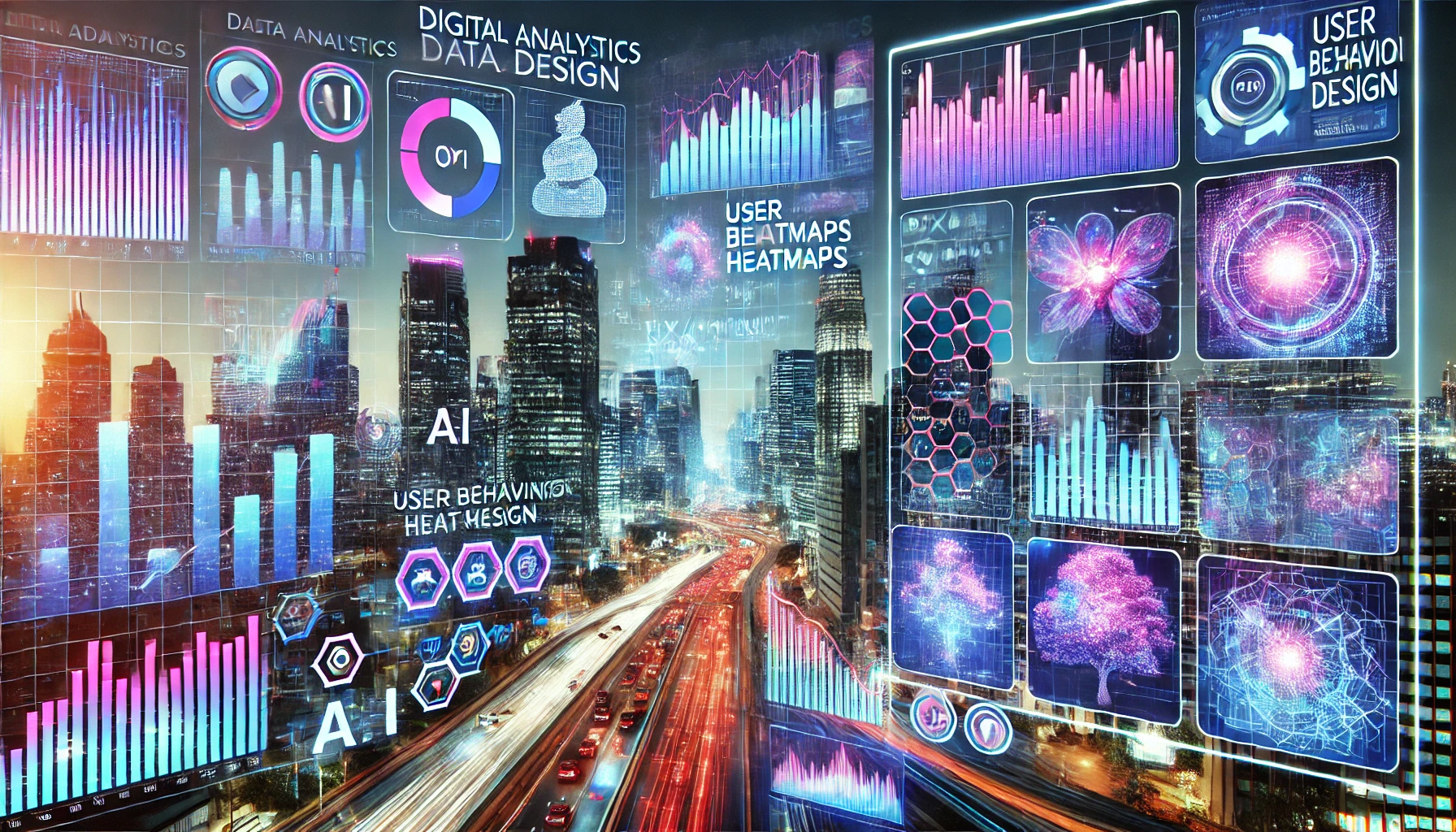Ad-Tech Industry Analysis: Market Gaps and UX Opportunities
Introduction
The advertising technology (Ad-Tech) industry has seen some serious changes lately, all thanks to data, automation, and AI-driven solutions. Brands and advertisers are putting a lot of emphasis on personalization, engaging their audiences, and making decisions based on data to really boost ad performance. But even with all these advancements, there are still some big gaps in the market that are holding back efficiency, usability, and the overall effectiveness of campaigns. In this article, we’ll dive into these gaps and look at UX opportunities that could help close them, ultimately enhancing the ad experience for both marketers and consumers.

Ad-tech – UX Challenges and opportunities
Current State of the Ad-Tech Industry
The Ad-Tech industry has made great strides with the rise of digital transformation, embracing programmatic advertising, real-time bidding, and data-driven targeting solutions. It’s constantly evolving to keep up with changing privacy regulations, the decline of cookies, and the growing demand for personalized advertising experiences.
Key Market Gaps
-
- Privacy-First Solutions – There’s a noticeable lack of strong alternatives to third-party cookies, limited options for privacy-compliant user tracking, and not enough transparency in how data is collected and used.
- Cross-Platform Integration – Measurement across different platforms is fragmented, attribution models are inconsistent, and there’s poor integration between mobile and desktop experiences.
- Accessibility – Many interfaces are too complex for non-technical users, creating high barriers for smaller advertisers, and there are limited self-service options available.
UX Opportunities
1. Simplified Campaign Management
Let’s make campaign creation and management a breeze with user-friendly interfaces:
– Introduce wizard-style setups that guide users through the process
– Offer AI-driven suggestions for better targeting and optimization
– Design visual campaign builders that allow for easy drag-and-drop functionality
2. Data Visualization
Let’s enhance how we present and analyze data:
– Create interactive dashboards that let users customize their metrics
– Incorporate predictive analytics to visualize future trends
– Automate the generation of insights and reporting for quicker decision-making
3. Cross-Platform Management
Make managing campaigns across various platforms seamless:
– Develop a unified dashboard that consolidates all advertising channels
– Ensure consistent user interface patterns across different platforms
– Synchronize data views and reporting for a cohesive experience
Current Challenges in the Ad-Tech Industry
1. Fragmented Ad Ecosystem
The advertising world is scattered across numerous platforms like Google Ads, Meta Ads, The Trade Desk, and ViralGains. Advertisers find it tough to maintain a consistent customer journey due to inconsistent data collection and a lack of integration across platforms.
2. Over-Reliance on Third-Party Data
With increasing privacy regulations such as GDPR and CCPA, third-party cookies are on their way out, making it harder for advertisers to effectively track and target audiences. There’s a growing demand for zero-party and first-party data solutions that provide direct insights from users while respecting their privacy.
3. Low Audience Engagement with Traditional Ads
Many users tend to ignore or skip ads that come off as intrusive or irrelevant. The key challenge is to create ads that are more interactive and personalized, encouraging users to engage rather than brush them aside.
4. Complex Campaign Management for Marketers
Ad managers often find it challenging to set up, optimize, and analyze campaigns efficiently. While current platforms boast powerful features, they frequently fall short in usability and have steep learning curves.
5. Inefficient Data Utilization and Reporting
Campaign managers are inundated with vast amounts of data, but turning that data into meaningful insights can be a struggle.
UX Opportunities in Ad-Tech
1. AI-Driven Personalization & Zero-Party Data Collection –
The move away from third-party cookies towards zero-party data is creating exciting possibilities for AI-driven solutions that gather user preferences, behaviors, and feedback directly. By using conversational surveys within ads, we can gain valuable audience insights while keeping the experience smooth and enjoyable.
2. Improving Cross-Platform Ad Management UX –
Integrating multi-platform campaign management dashboards allows advertisers to streamline reporting and enhance performance from one central interface. By focusing on workflow automation and user-friendly UI elements, we can simplify the process and reduce complexity.
3. Enhancing Ad Engagement Through Interactivity –
Interactive ad formats, such as AI-driven surveys, gamified experiences, and adaptive video ads, can significantly increase engagement. These formats encourage users to actively participate instead of just passively consuming content.
4. AI-Powered Data Visualization and Insights –
Smart dashboards powered by AI can deliver real-time insights into campaigns, offer predictive analytics, and provide automated recommendations to campaign managers. This not only cuts down on manual work but also enhances decision-making.
5. Simplified Survey Experience for Campaign Managers –
AI-based survey optimization tools can create contextual and relevant questions, leading to better audience responses and more efficient data collection.
Project 1: AI-Enabled Ads for Zero-Party Data Collection
One of the exciting projects I tackled involved integrating AI-driven conversational ads to effortlessly gather zero-party data. The aim was to turn traditional, static ads into lively, interactive experiences where users could respond to questions that reflect their preferences and behaviors.
Key Features:
- Ads that adapt dynamically based on user responses.
- AI that interprets answers and fine-tunes targeting in real-time.
- Users feel empowered, which boosts engagement rates.
UX Challenges & Solutions:
Problem: Users might feel overwhelmed by too many questions in an ad.
Solution: I designed an adaptive questioning flow that presents only 1-2 relevant questions based on user behavior.
Problem: Advertisers need to be sure about data compliance.
Solution: I made sure all interactions align with GDPR & CCPA regulations while offering opt-in consent options.
The outcome : A noticeable increase in response rates and richer audience insights, leading to better ad personalization and a higher ROI for advertisers.
Project 2: Revolutionizing Survey Engagement with AI
To tackle the challenges in survey creation, I developed an AI-powered survey recommendation tool aimed at campaign managers. This tool offers real-time suggestions for survey questions based on campaign goals, audience demographics, and past engagement data.
Key Features :
- AI-generated survey question recommendations tailored to campaign objectives.
- Smart prompts that encourage more meaningful user responses.
- Dynamic adjustments based on previous campaign performance.
UX Challenges & Solutions:
Problem: Campaign managers often find it tough to craft effective survey questions.
Solution: I built an AI-powered recommendation system that suggests the most relevant questions based on industry benchmarks.
Problem: An abundance of generic survey templates leads to low response rates.
Solution: AI personalizes survey formats according to audience preferences and engagement behavior.
UX Guidelines
- Navigation –
- Use a clear hierarchical structure to guide users.
- Implement navigation elements that stay visible as users scroll.
- Provide breadcrumb navigation to help users track their path through complex workflows.
- Include a search function with filters to make finding information easier.
- Data Entry –
- Set up smart defaults that adapt to user behavior for a smoother experience.
- Offer real-time validation and feedback to help users correct mistakes on the spot.
- Incorporate auto-save features to prevent data loss.
- Enable bulk editing capabilities for efficiency.
Future Considerations –
The Ad-Tech industry needs to evolve to tackle new challenges:
- Integrate privacy-preserving technologies to protect user data.
- Embrace AI and machine learning to automate processes.
- Develop contextual advertising solutions that resonate with users.
- Implement blockchain technology to enhance transparency.
Recommendations for Implementation
When rolling out these UX improvements –
- Conduct regular user testing with diverse segments to gather insights.
- Make changes gradually, using A/B testing to measure effectiveness.
- Keep thorough documentation and style guides to ensure consistency.
- Continuously collect and analyze user feedback to refine the experience.
Conclusion: The Future of UX in Ad-Tech
The Ad-Tech landscape is changing, but there’s still a significant gap in usability, engagement, and data optimization. AI-driven solutions are leading the charge toward a more user-focused approach, allowing advertisers to craft engaging, personalized, and efficient campaigns. My work on AI-Enabled Ads and Survey Optimization has showcased the potential of interactive, data-driven advertising, laying the groundwork for future innovations. To stay ahead in Ad-Tech, UX professionals should prioritize simplifying complex workflows, enhancing interactivity, and harnessing AI for smart automation. By addressing these market gaps, we can build a more intuitive and high-performing advertising ecosystem that benefits both advertisers and consumers.

